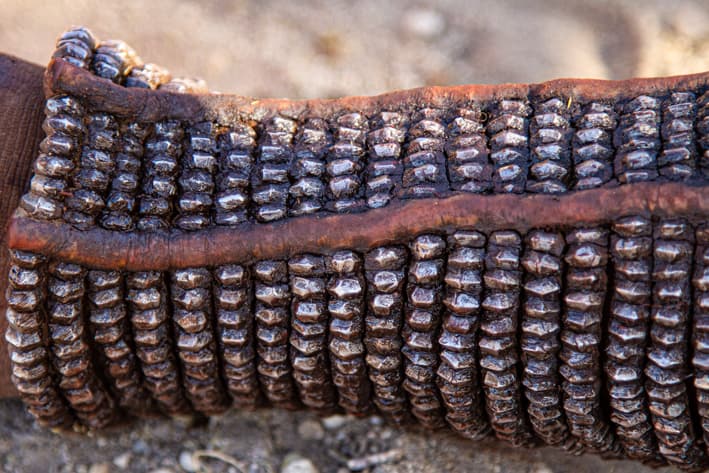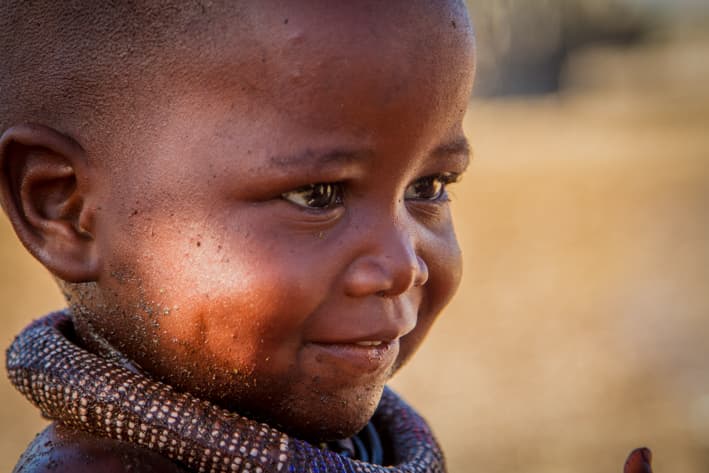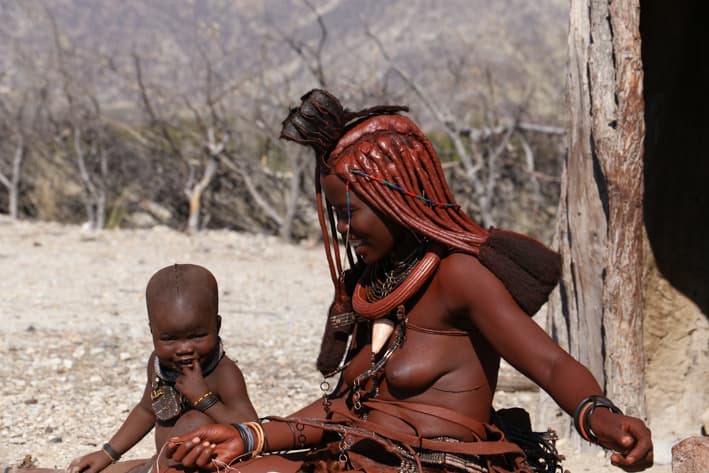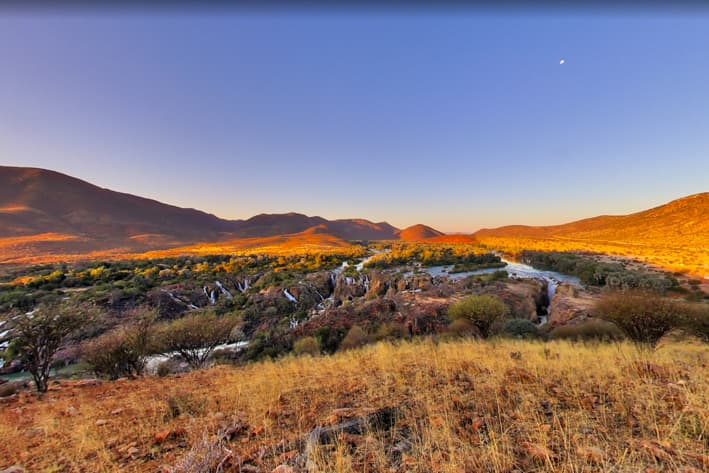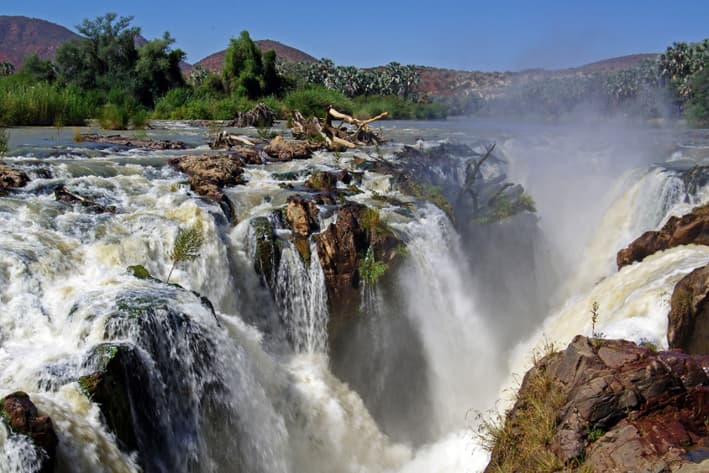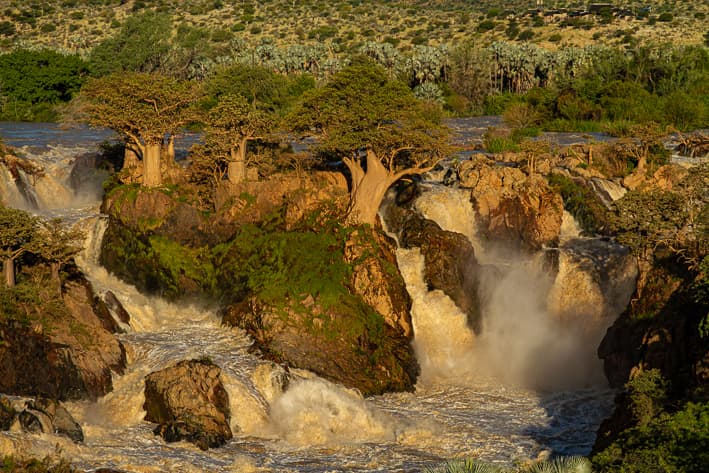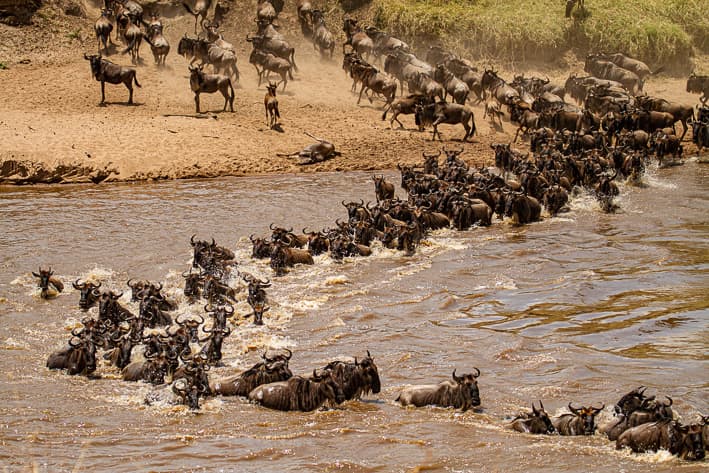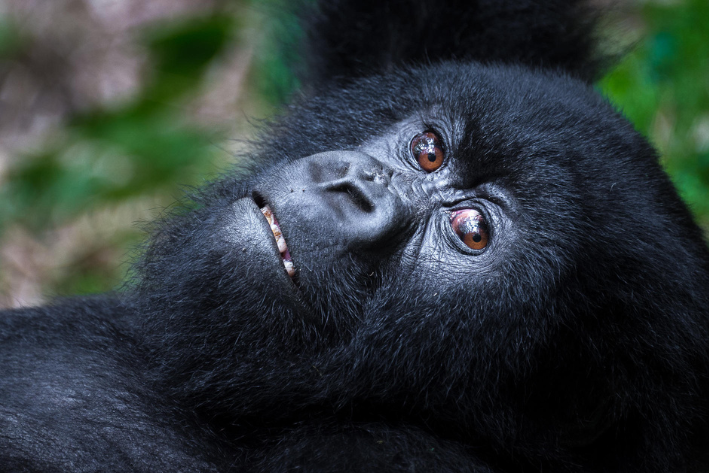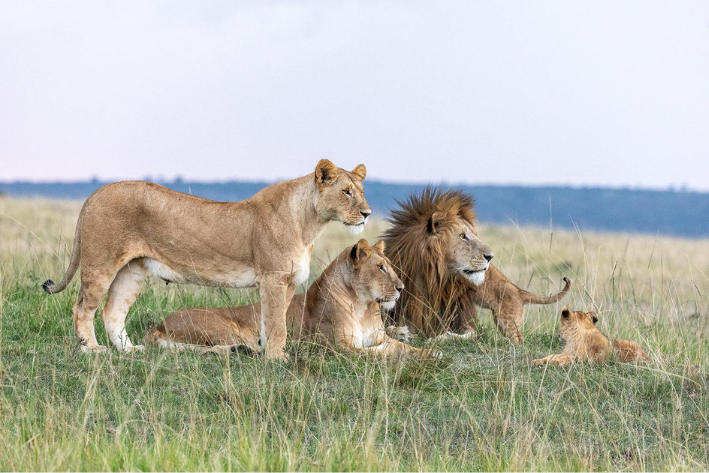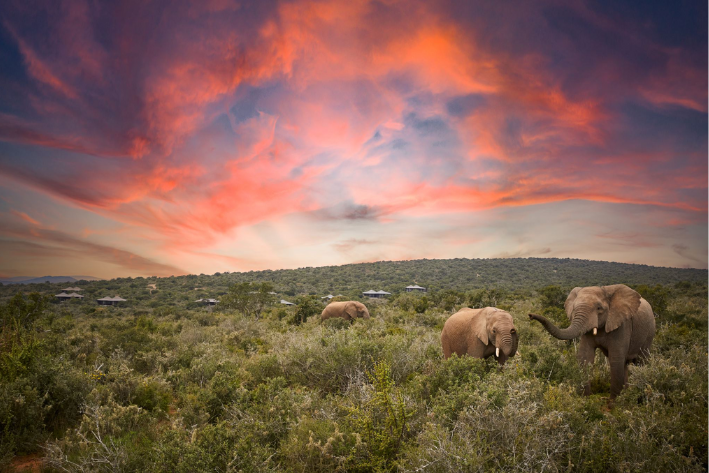Himba Tribe, Namibia
The Himba are an ancient, semi-nomadic tribe that live in the far northern Kaokoland of Namibia. They live in simple mud huts constructed of samplings bound together with palm leaves, mud, and cow dung. The cone-shaped huts are at the edge of the homestead with their cattle kraal in the center. The Himba tribes were almost completely wiped out during the Namibian war for independence, but they persevered and are now doing well, eking out an existence in the dry desolate landscape of Northern Namibia and Southern Angola.
The women in the village do most of the labor-intensive work including carrying water, building the homes and milking the cows, while the men do more of the administrative and political tasks within the village. The sign of wealth within the Himba communities is represented by the number of cattle they own.
Both the men and women wear traditional clothing that suits the harsh, hot environment of the Kaokoland, and that consists of a calfskin skirt and sandals. Women who have given birth wear a small backpack of calf skin around their traditional outfits. The Himba women are very recognizable by their red skin and platted hair. The red skin comes from a mixture of butterfat and ochre that is applied to their bodies and hair as protection against the harsh, dry environment as well as from insect bites.
The most authentic Himba tribes still live a very traditional way of life, but still allow a few tourists to visit their village and learn more about their culture and way of life. This is the best one from one of our preferred camps and lodges listed below and with the assistance of one of their guides. A visit to a Himba village is not a tourist attraction as this is their home and way of life, so we ask that our guests respect their traditions and beliefs when visiting a Himba tribe in Namibia.
These are our preferred lodges and camps located in the northern part of Namibia where the Himba live.
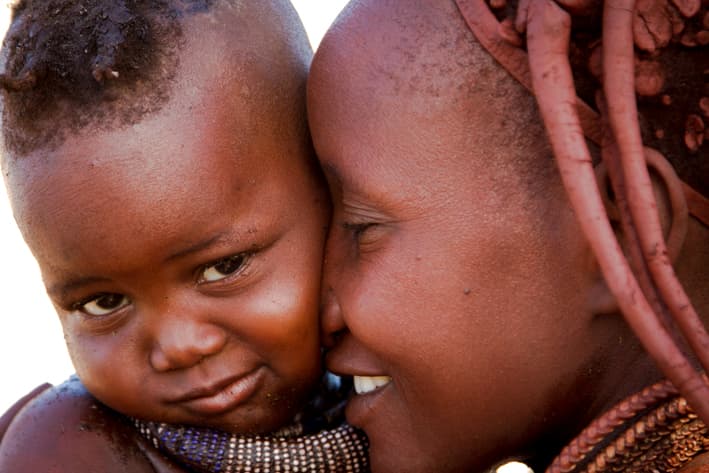
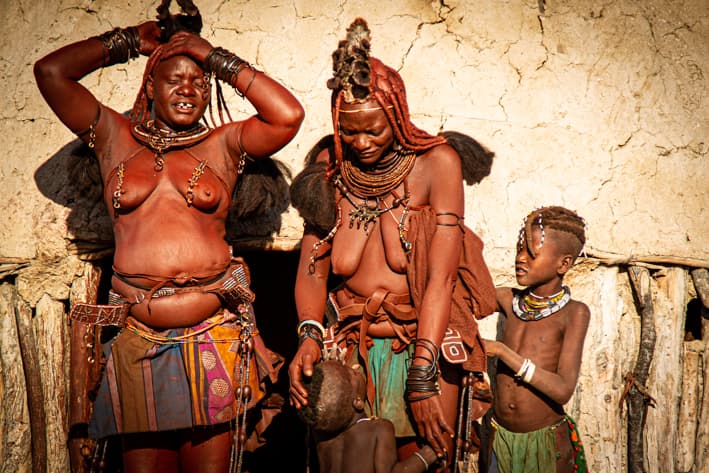
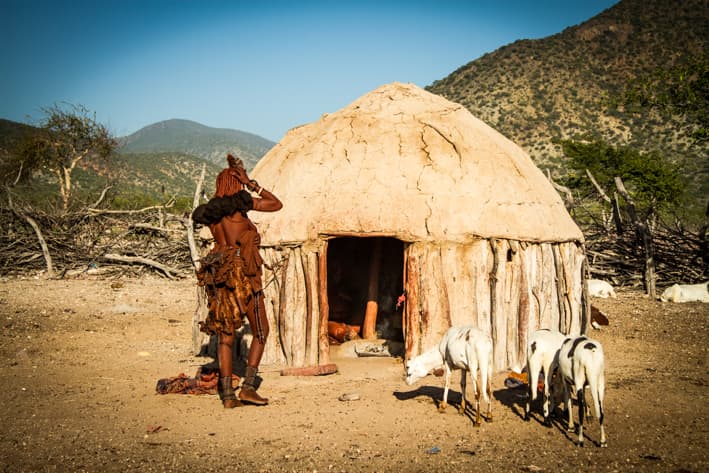
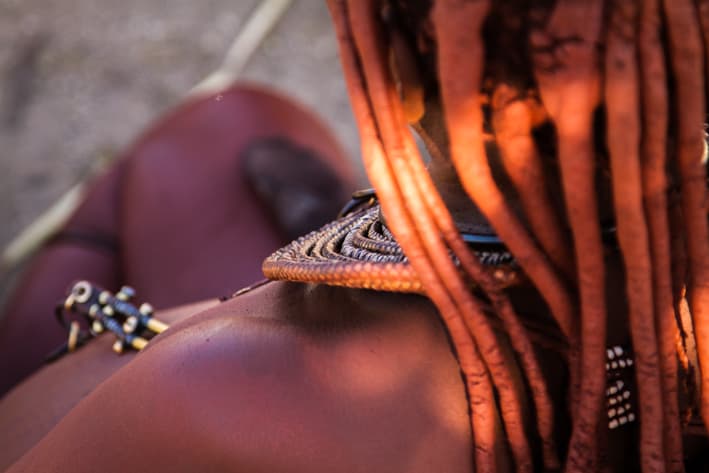
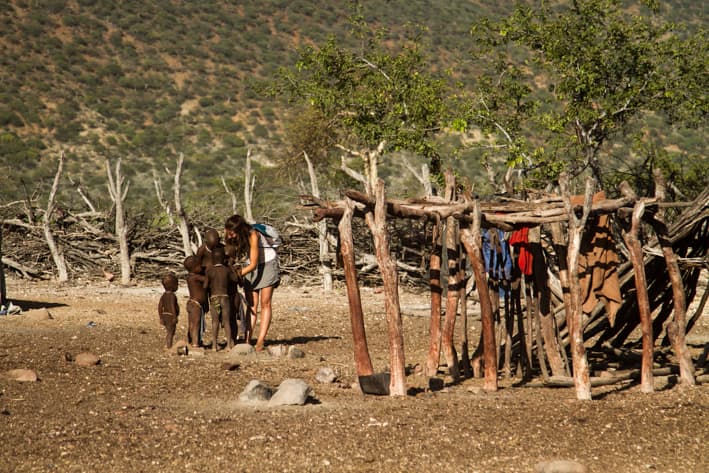
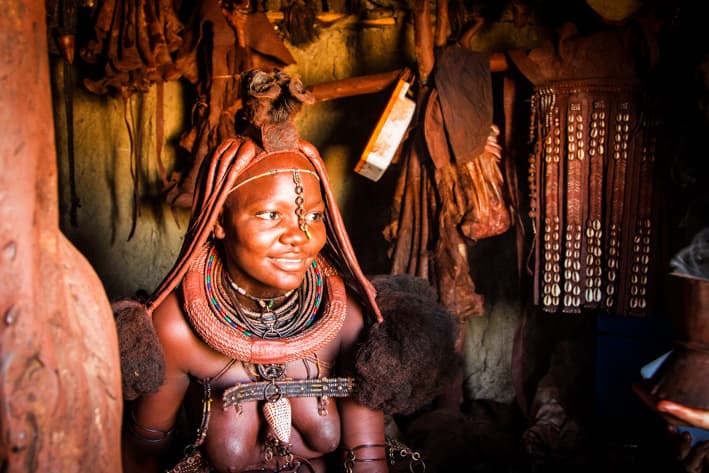
Stanley Safaris’ preferred lodges and camps where you have the best opportunity to meet Himba tribes. These are our preferred lodges and camps located in the northern part of Namibia where the Himba live.
Serra Cafema Camp
Located right in the north of Namibia overlooking the Kunene River into Angola, Serra Cafema is one of the most remote camps in Africa and can only be accessed by light aircraft. There are just 8 chalets on raised decks overlooking the river. The extensive main area is situated under the canopy of trees along the river offering spectacular views across to the mountains in Angola.
Guests staying at Serra Cafema can enjoy boating on the river (water level dependent), quad biking through the Marienfluss Conservancy, nature drives in the Harymann’s Valley and of course respectful interactions with the Himba tribes that live on the conservancy. The area around Serra Cafema is extremely arid and consists of rocky mountains and rolling sand dunes and so is a photographers dream.
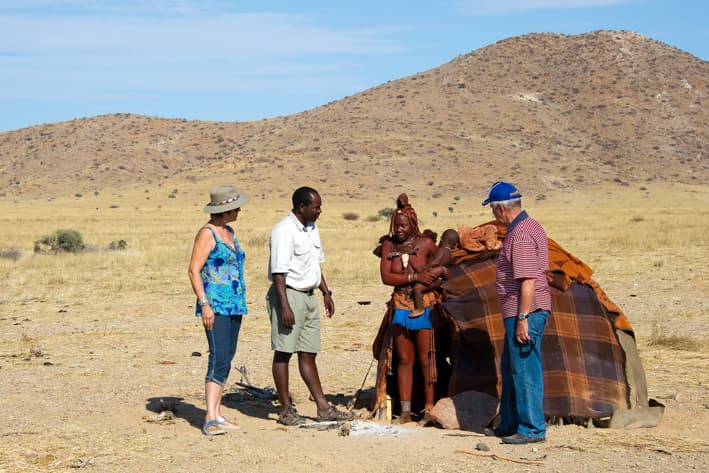
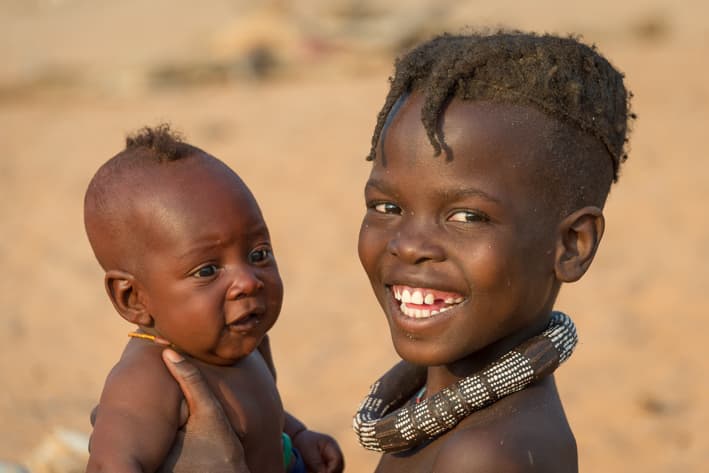
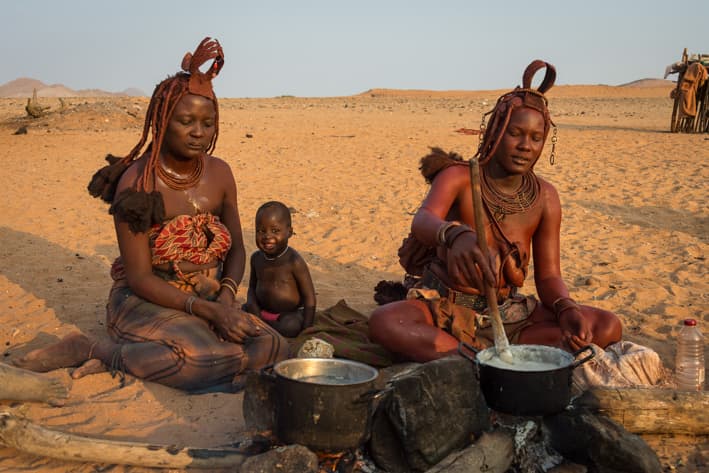
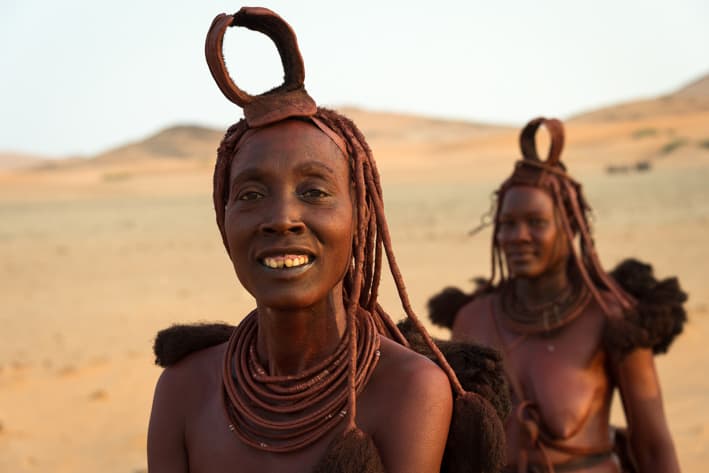
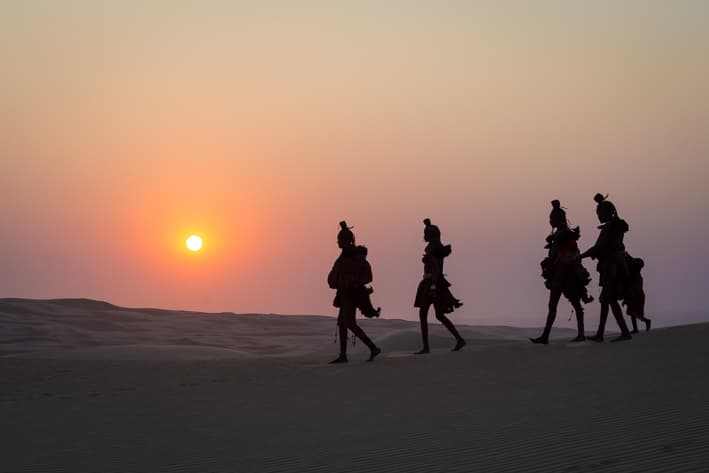
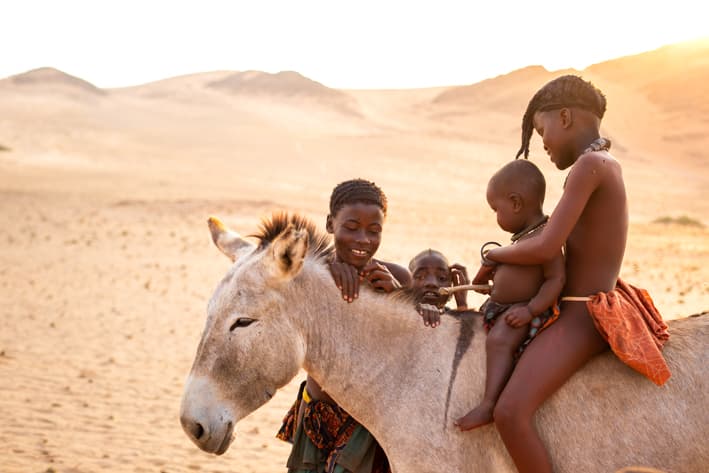
Okahirongo Elephant Camp
The Beautiful Okahirongo Elephant Camp is a remote lodge perched on a hill overlooking the dry Hoarusib River is the Purros Conservancy. Built out of the red earth that blends the lodge perfectly into its arid surroundings, the 7 luxury chalets and 1 presidential villa have everything you need to relax and enjoy the incredible location of the lodge. The main complex area is shaped after the local Himba villages with their dome like entrances and huts and the central Boma or meeting area where the fire usually is. There are lounges, libraries a dining area and swimming pool to complete the guest area.
Staying at Okahirongo Elephant Camp is all about the location. The Purros Conservancy is home to desert adapted elephants, lion, giraffe and other animals. Head out on game drives in search of these desert adapted animals as they move through the dry riverbeds following ancient trails from spring to spring feeding on the acacia trees as they go. A highlight of a stay at Okahirongo Elephant Camp is the opportunity to go black rhino tracking. Departing the lodge very early in the morning, you head to the area where the rhinos usually live and from there you head out on foot with your trackers in search of these incredibly rare animals. The lodge staff are all from the local area and are often Himba men or women and so the Himba Village tour is an incredible experience as you are visiting their homes and getting to learn more about their lives, culture and traditions.
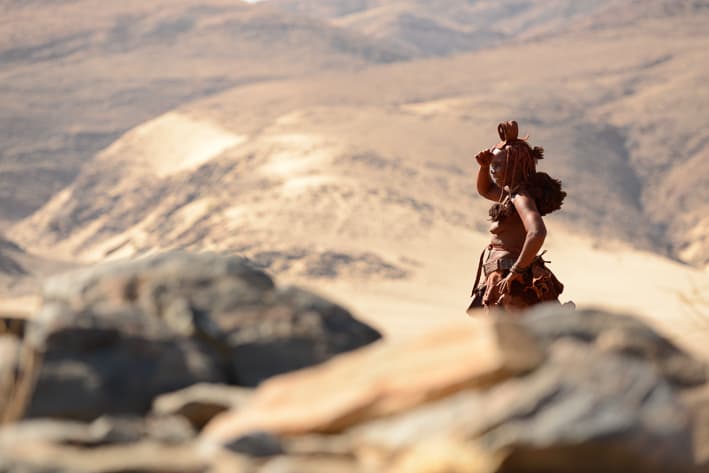
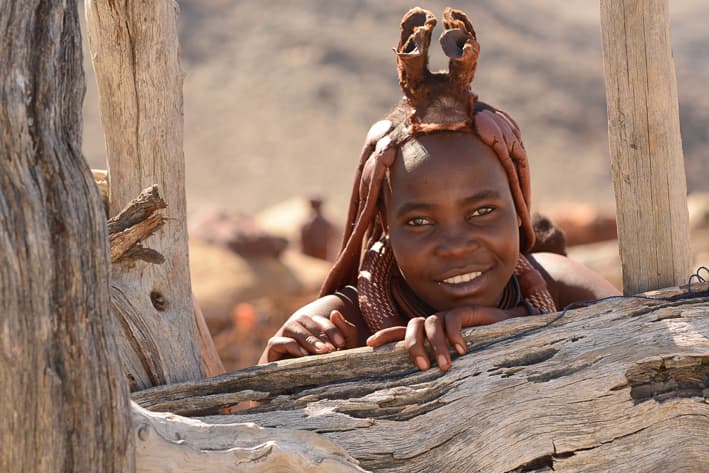
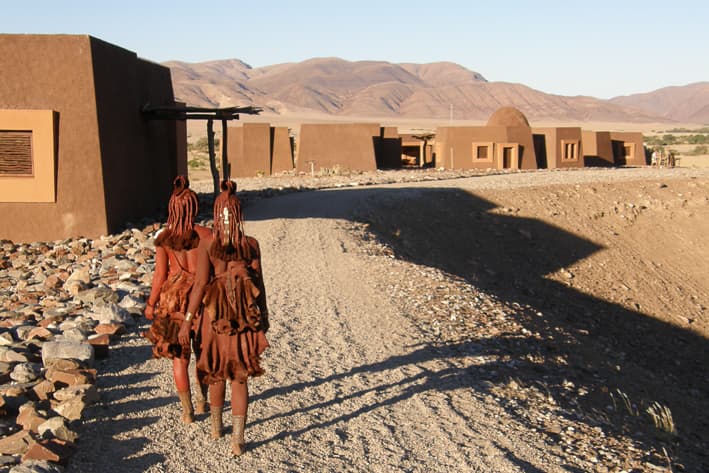

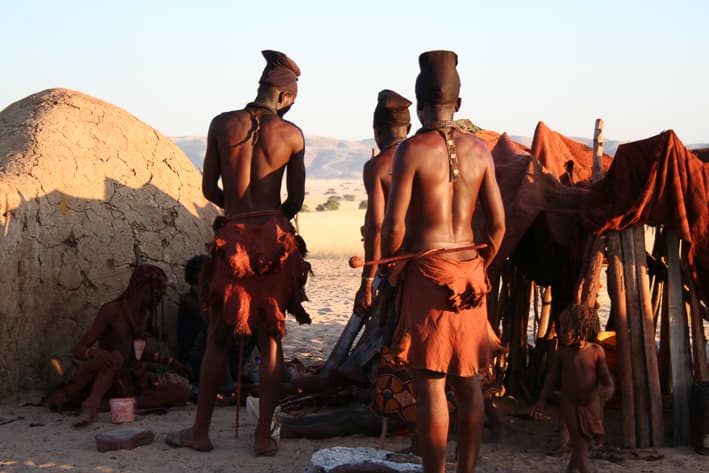
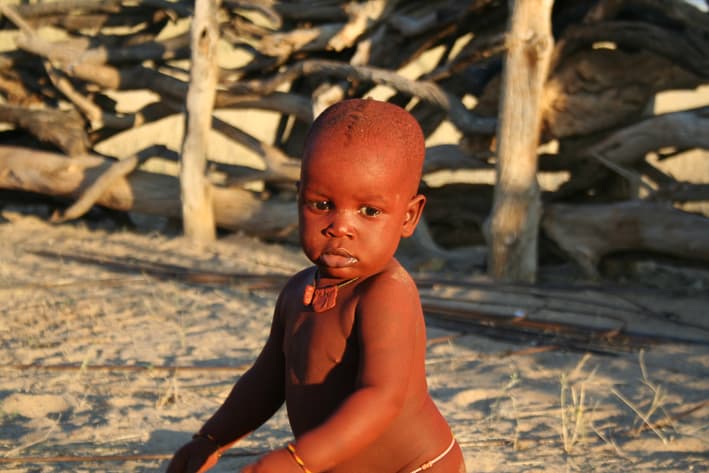
Okahirongo River Camp
This is the sister camp to the Okahirongo Elephant Camp, located in the Marienfluss Conservancy in the far north of Namibia overlooking the Kunene River across into Angola. The 7 twin/double and 1 family tent are perched on the ridge with exceptional views of the river and mountains. Constructed from canvas, wood and concrete walls to blend into the surrounding mountainous landscape. The main area is connected by boardwalks and consists of a shimmering pool, 2 lounges, a library and a dining area.
Guests staying at Okahirongo River Camp can enjoy boat trips on the river (water level dependent), scenic drives in the area enjoying sundowners at the end of the day, mountain trekking or simply relax in the camp and enjoy the scenery and peace and quiet except for the flow of the river below.
All the guides at Okahirongo River camp are Himbas and so the Himba experience here is true and authentic. This is usually a full day excursion, leaving early in the morning to locate the village (they are semi-nomadic) and then once there you will have a chance to learn more about their way of life, traditions and cultures.
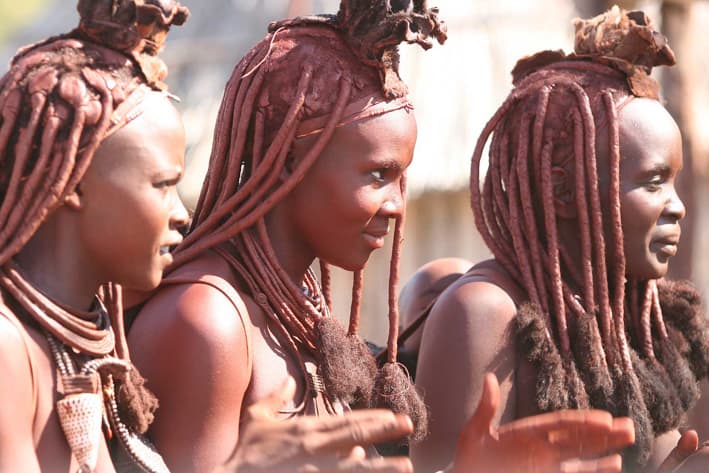
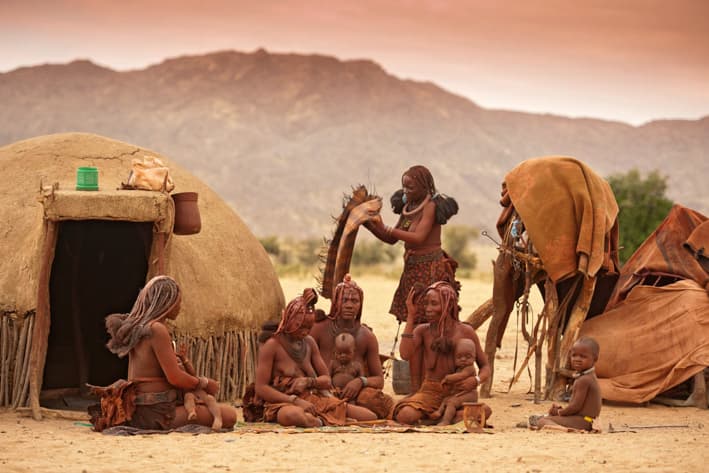
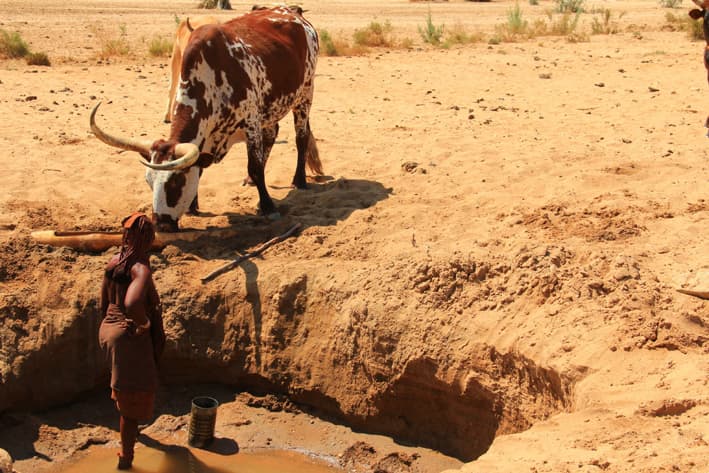
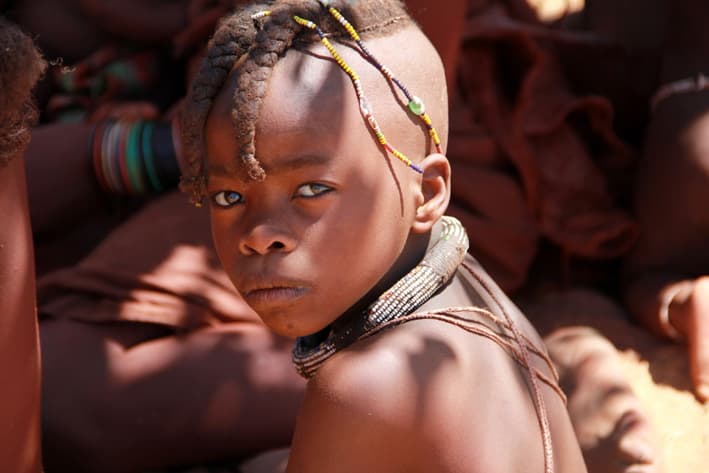
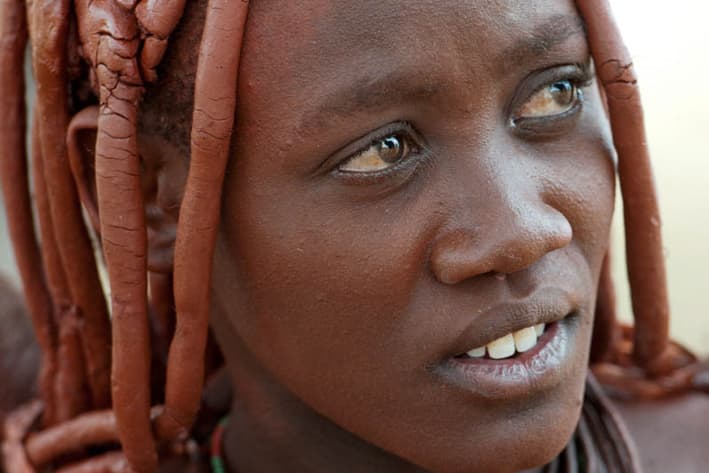

Epupa Camp
Epupa Camp is the most rustic of the camps in the far north of Namibia, but the location makes the stay here memorable. The camp is located just 700 meters away from the impressive Epupa Falls, making it the ideal base from which to view the Kunene River plunge through gorges dotted with baobabs clinging to the rock face. There are 8 standard tents, 1 honeymoon tent and 1 family tent all set on the riverbank. The tents are rustic with their own ensuite shower and toilet. There main area includes a pool, lounge, bar with Wifi, library and dining area.
Guests staying at Epupa Camp would probably have driven here on a self-drive safari to Namibia and so can visit the falls (walking is perfect) on their own. There are guided activities from the camp, and these include walks in the area, rafting on the river, guided walks to the falls and best of all a guided visit to a Himba Village. We would always recommend taking a guide with you to visit a Himba village as they will know the best way to meet the tribe. Going alone will be very disrespectful and is something we do not encourage.
